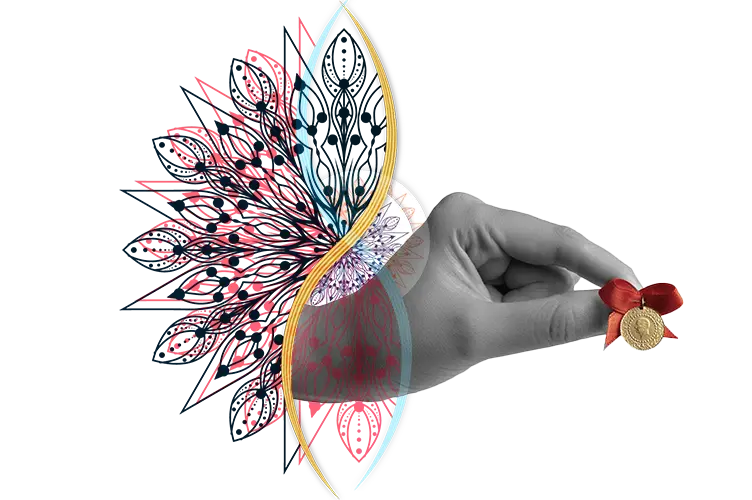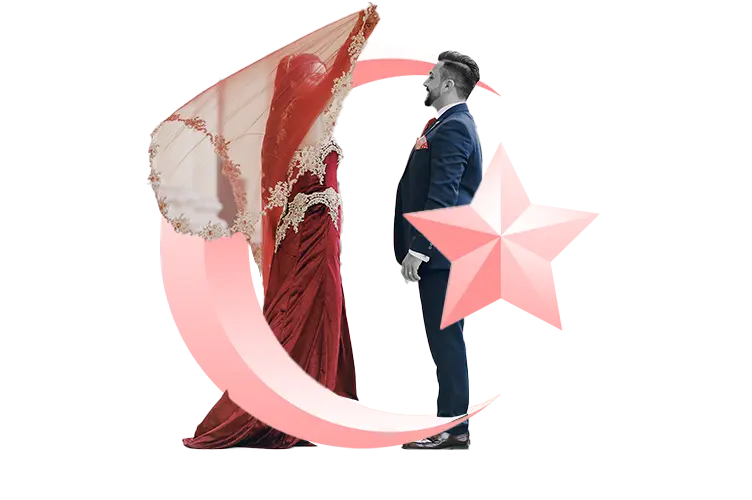
Turkish wedding traditions are rich in history and symbolism, with roots that date back centuries. From the engagement ceremony to the wedding reception, each aspect of a Turkish wedding is steeped in tradition and meaning. The vibrant music, colorful attire, and delicious food create an unforgettable celebration that brings families and communities together.
Looking to plan a traditional Turkish wedding? Here are some common Turkish wedding customs.

Similar to many other countries, it’s customary for the groom to ask the bride’s father for permission before the proposal. However, it isn’t simply asking for permission. Before the wedding, the groom and his family visit the bride’s family to ask for their daughter’s hand in marriage. Often a specific script is followed when asking for permission.
Following the ‘el isteme’ (asking for the bride’s hand), there is a promise ceremony called the ‘söz kesmek,’ which these days tends to be held on the same day of the engagement (if the bride’s family agrees). The ceremony represents the couple’s commitment to marriage and one another’s family. During this ceremony, simple rings are tied with a red ribbon, the couple puts them on one another, and then the ribbon is cut.
Another tradition of coffee with salt happens during the visit when the groom’s family visits to ask for her hand. The bride would offer Turkish coffee with sugar to everyone except the groom.
She would add salt instead of sugar for the groom, forcing him to suffer the taste as a gesture of his love. In the past, some saw this tradition to symbolize the groom’s readiness to put up with whatever the bride throws at him. Nowadays, when this tradition is continued, it is more for the laughs watching the groom attempt not to make facial expressions.
The ceremony is typically followed by a feast, with music and dancing, to celebrate the couple’s commitment.
Generally, the couple will have an engagement party thrown by the bride’s family. The engagement party tends to be similar to many other cultures; however, it’s not uncommon for the guest list to be between 100 and 500.

The night before the wedding, the future bride and her female relatives and friends gather for the henna night, also known as “kına gecesi.” Traditionally, the bride dresses in an evening gown, covering her head with a red veil. They start by playing sad music to make the bride cry as this celebration represents the bride leaving the family home. The future mother-in-law puts a gold coin in the bride’s hand, opening the henna ceremony.
The guests apply henna to the bride’s hands and feet to symbolize good luck and fertility.
The journey to the wedding ceremony is part of the celebration, called the ‘gelin alma’ or fetching of the bride. Music is played, and there is often dancing if the distance is short enough to walk, or cars are decorated and honk and play loud music as they travel from the bride’s house.
However, a few things happen before the bride leaves the house. Her brother or other close relative places a red sash around her waist – traditionally called a ‘maidenhood belt.’ While today many couples are letting go of the traditional ideas around virginity, many brides continue to wear red to keep with tradition.
The bride also writes the names of all her single friends on the bottom of her shoe before the wedding, and whoever’s name is the first to be rubbed out (or generally the most faded at the end of the night) is to be the next person to get married.
The wedding ceremony is typically short and sweet, with exchanging rings and vows.
At the end of the ceremony, the bride and groom often compete to be the first person to step off the altar, which symbolizes who will have the most power in their relationship.
At the reception, before sitting down for the meal, the couple greets each of their guests, and the guests pin money on the bride and groom’s clothing to wish them good luck and prosperity.
Traditional Turkish music and dances, such as the “halay” and “zeybek,” are integral to the wedding reception. The bride and groom and their families and friends dance together to celebrate the couple’s union.

At the end of the wedding reception, the bride and groom say goodbye to their guests and leave for their honeymoon. The families of the couple also exchange gifts as a way of thanking each other for the celebration.

The traditional Turkish wedding dress varies depending on the region and the bride’s preferences. However, some standard features and styles can be identified.
A Turkish bride’s wedding dress can be a white gown with a veil, similar to Western bridal attire. However, incorporating red and gold is very common. In Turkish culture, red is considered a symbol of luck, love, and fertility, and many brides choose to wear a red or burgundy dress or incorporate red accents.
One of the most common features of a traditional Turkish wedding dress is rich fabrics and ornate embroidery. The dress is often made from silk or satin. It may be embellished with gold or silver thread, pearls, or other decorative elements.
In addition to the wedding dress, a few accessories are essential for the bride to wear on the wedding day in a typical Turkish wedding.
A Turkish wedding is an excellent excuse for guests to dress up. If you attend a Turkish wedding, you can expect to see lots of formal attire, so you can choose something colorful and elegant.
The wedding party wears similar attire for photos as in Western culture.
Traditionally, the groom’s family would pay for the wedding.
The red ribbon is a symbol of the bride’s virginity. In the past, the absence of a maiden belt would cause neighborhood gossip; however, nowadays, brides decide whether to wear it.
Engagement gifts or ‘nişan bohcasi’ are exchanged between families to show their appreciation. They tend to be practical gifts such as perfume, pajamas, towels, etc.
Traditionally it’s best to give gold, if possible, even if the value of the gold is less than you may have given in cash. Cash is also acceptable, with folks closest to the couple giving $100 and others giving $50.
At The Groom Club, we help grooms up their game at every stage, from destination bachelor parties to learning more about tuxedos!
Make the Groom Club your go-to spot for all the latest on how to make your wedding unique and memorable. Discover all our latest articles today and subscribe to our newsletter for more TGC content.